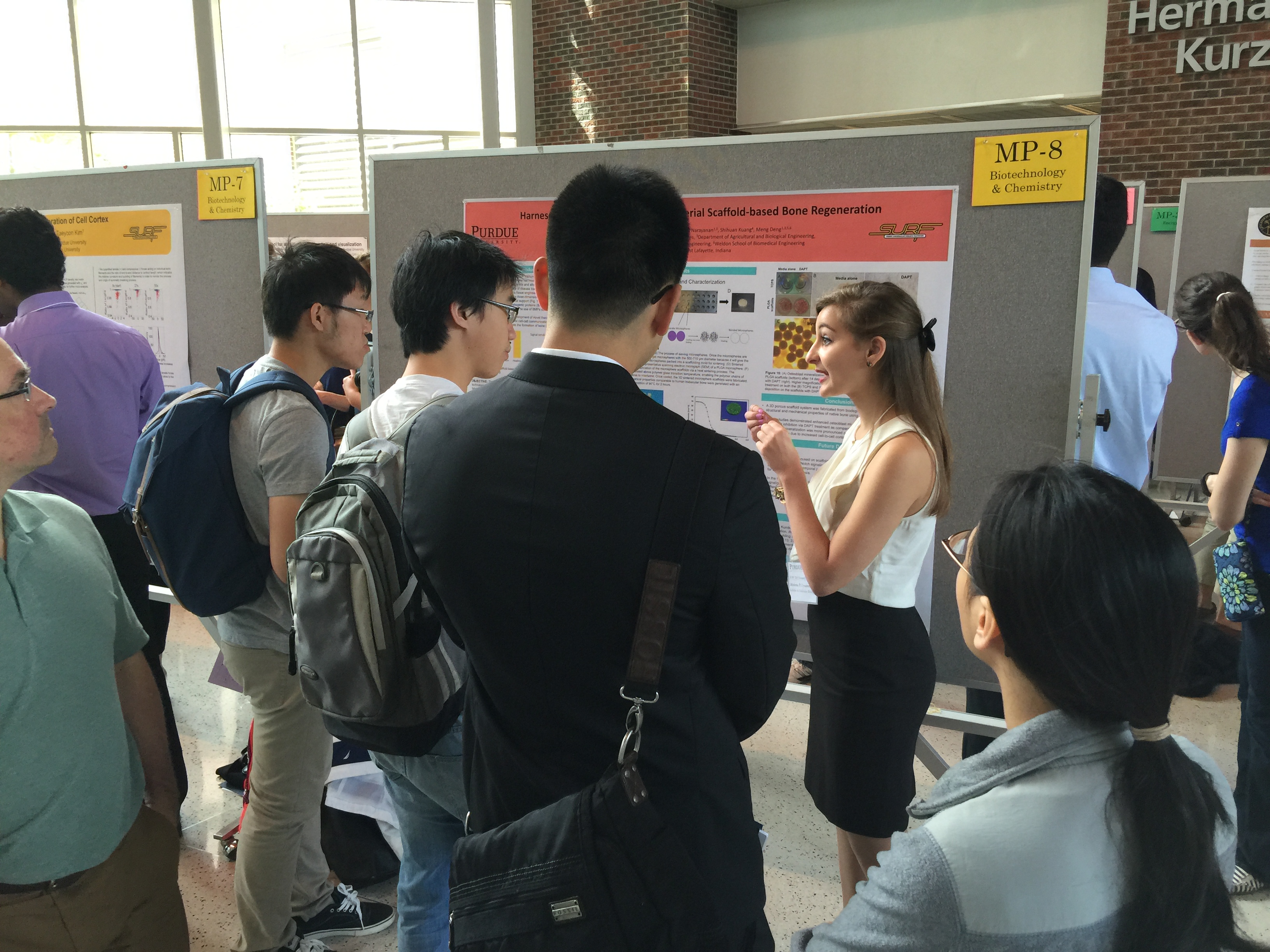Helena Lysandrou
October 21, 2015
By Emma Alexander, Honors Communications Intern
Helena Lysandrou is a sophomore in the honors college from Bloomington, Indiana. She is majoring in biology and is planning to focus her major on genetics. Now, if you are geographically aware, you may be thinking that Bloomington, Indiana is the home of our fiercest rival, Indiana University. When I asked Helena why she chose Purdue, she was very compelling in her reasoning; however, her ties to IU go far beyond a hometown. Helena’s entire family on her dad’s side were IU alums. But what makes this even more unique, is that neither her dad nor any of his family is from Indiana, let alone the United States. In fact, they aren’t even from the Western Hemisphere. Helena’s family is from Cypress, a small Greek nation near Turkey. However, despite her rather strong family ties to IU, Helena chose Purdue. And many of the reasons Helena chose Purdue, correspond directly with the reason I sat down to interview her in the first place.
Here is what Helena had to say about her college choice,
Purdue… I just fell in love with it the first time I visited it because of the focus on research and science. I actually visited for one of the Golden Honors Days and talked with some of the science ambassadors for the school of science. [Coincidentally Helena is now an ambassador for the college of science herself]. They all talked about getting involved in research and how much research was available and pushed towards undergraduates. I didn’t feel like I could get that kind of experience anywhere else.
Although she is only just starting her second year as a Purdue student, Helena has already become very involved in undergraduate research, working in a lab beginning her second semester of school. What’s more, Helena is a co-policy and practices director for Purdue’s International Genetically Engineered Machines (IGEM) Team. To learn more about IGEM, Helena’s role as a board member, and the team’s recent trip to an international convention, you can read the story on iGEM on our website.
However, Helena’s personal research project was the primary topic of our interview. Helena has been interested in doing research since she learned about STEM cells in her AP Biology class in high school. More specifically, she was interested in regenerative engineering. During her first semester, Helena attended the research roundtable and discovered that there was a lab on campus conducting precisely the sort of research she was interested in. Consequently, Helena reached out to Dr. Deng, the professor of the generative engineering lab which sparked her interest, and shared her passion and interest in what he was doing. As a result, Helena began working in that very lab at the beginning of her second semester. She was also interested in staying on campus to continue her research full time over the summer and was awarded a SURF grant to do so.
Helena’s project dealt, specifically, with bone regeneration. Her project looks to solve the problem of non-union bone fractures, or fractures which do not heal completely. To put the significance of this issue into perspective, more than 6.5 million fractures occur every year in the United States, and 10% of those fractures are non-union fractures. Needless to say, this problem affects the lives of many Americans every year. To begin addressing this issue, Helena looked at a signaling pathway called the “notch signaling pathway,” which had been known to inhibit bone regeneration. As part of her project, Helena inhibited this pathway and observed the results of doing so on bone growth. The other part of Helena’s project involved the creation of biomolecular scaffolding. On a high level, she developed tiny objects called microspheres out of a polymer called PLGA. This polymer was selected because it very closely mimics bone cells. Now, microspheres are precisely what you probably think they are, very tiny spheres. A network of this microspheres, created by using a mold, were used to grow bone cells on. To grow the bone cells, Helena first inhibited the notch signaling pathway we previously discussed. However, once the bone cells were finished growing around the spheres, the spheres themselves degraded away. That’s right, these microspheres are both biodegradable and FDA approved. So, once the scaffold of microspheres degrades away, you are left with a bone matrix. The matrix, made of true bone cells, mimics the porosity of the pre-existing bone.
The results of her project have certainly been successful thus far. Helena was even the recipient of the “Top Research Poster Award of Excellence” at the SURF Research Symposium. Looking forward, Helena plans to continue with what she has been doing, but taking more steps to improve the ability of the scaffold to accurately mimic true bone.

Above: Helena presenting her research at the SURF Research Symposium
From the moment I sat down with Helena, her enthusiasm and passion was truly infectious. I know she certainly sparked my interest in bone and tissue regeneration, and I know that she has many great things in store for her here at Purdue. If you are interested in exploring more about Dr. Deng’s lab, you can visit his website at http://www.regenerativematter.com/index.html and look out for more news of Helena’s research and accomplishments.
Don’t forget to check out our latest news story to learn more about Purdue’s IGEM team. Have a great week and Boiler Up!



